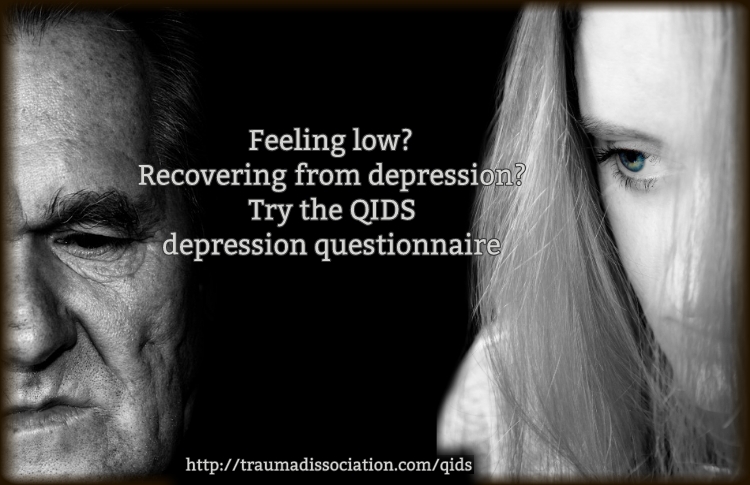Quick Inventory of Depressive Symptomatology
QIDS-SR 16 – Depression questionnaire
Instructions:
The Quick Inventory of Depressive Symptomatology is a short screening tool based on the larger Inventory of Depressive Symptomatology (IDS).[1] It is a self-report tool designed to screen for depression and measure changes in severity of symptoms. It assesses all the main criteria for Major Depressive Disorder in the Diagnostic and Statistical Manual of Mental Disorders - 4th edition (DSM-IV). It does not assess melancholoic or atypical depressive symptoms. [1], [3]:1 There are 16 questions, based on how you have been feeling in the last 7 days. These questions have been designed for adults rather than children or adolescents.[1] A printable version can also be downloaded. Translations are also available in many different languages.
Result Explained
For Major Depressive Disorder scores of 0–5 indicate no depression, 6-10 indicates mild depression, 11-15 is moderate depression, 16-20 is severe depression, and 21-27 is very severe depression. [3] For a DSM-IV diagnosis of Major Depressive Disorder the symptoms must last at least two weeks rather than the one week referred to in the questionnaire, and there must be no history of mania. [4] More recently, a cut-off score of 13 has been suggested as more accurate for diagnosing Major Depressive Disorder (MDD), and a slightly lower cut-off of 10 improved accuracy for African Americans. [3]:428-429A clinical interview may give a different diagnosis from Major Depressive Disorder, for example Bipolar Disorder, Dysthymic Disorder (a long term depressive disorder), or Depressive Disorder Not Otherwise Specified, and could identify people with Major Depressive Disorder who scored below the cut-off.[3]:428-429 People with Dysthymic Disorder will typically have insufficient symptoms to meet the criteria for Major Depressive Disorder, and low mood for at least 2 years. [5]
Back to top
References
- University of Pittsburgh Department of Epidemiology. (n.d.). Inventory of Depressive Symptomatology (IDS) & Quick Inventory of Depressive Symptomatology (QIDS). Retrieved July 2, 2015.
- Rush A.J., Trivedi M.H. , Ibrahim H.M., Carmody T.J., Arnow B., Klein D.N., Markowitz J.C., Ninan P.T., Kornstein S., Manber R., Thase M.E., Kocsis J.H., Keller M.B. (2003). The 16-item Quick Inventory of Depressive Symptomatology (QIDS) Clinician Rating (QIDS-C) and Self-Report (QIDS-SR): A psychometric evaluation in patients with chronic major depression. Biological Psychiatry, 54(5), 573–583. doi:10.1016/s0006-3223(02)01866-8. PMID: 12946886.
- Lamoureux, B. E., Linardatos, E., Fresco, D. M., Bartko, D., Logue, E., & Milo, L. (2010). Using the QIDS-SR16 to Identify Major Depressive Disorder in Primary Care Medical Patients. Behavior Therapy, 41(3), 423–431. doi:10.1016/j.beth.2009.12.002. PMID: 20569790.
- American Psychiatric Association. (2000) Diagnostic and Statistical Manual of Mental Disorders, Fourth Edition, Text Revision. (DSM-IV-TR).
- Halverson, J. L., Bhalla, R. N., Andrew, L. B., Moraille-Bhalla, P., Leonard, R. C. (2015, May 7). Depression Differential Diagnoses. Retrieved July 4, 2015.
Cite this page
Quick Inventory of Depressive Symptomatology. Traumadissociation.com, Retrieved from .The copyright for the questions, answers and scoring method belong to the original authors of the research, Rush, et al. (2003). See references [2]. The remaining information can be copied or modified for any purpose, including commercially, provided a link back is included. License: CC BY-SA 4.0
Download page as PDF
